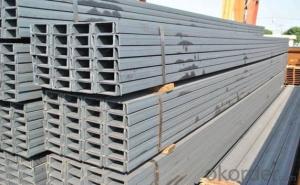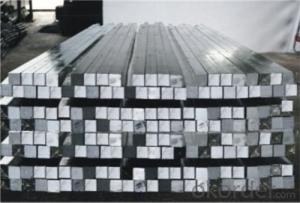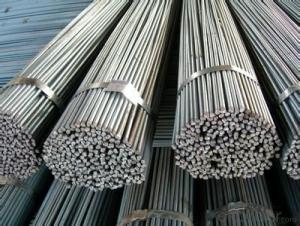140mm*60mm u channel steel for construction
- Loading Port:
- Tianjin
- Payment Terms:
- TT or LC
- Min Order Qty:
- 25 m.t.
- Supply Capability:
- 100000 m.t./month
OKorder Service Pledge
OKorder Financial Service
You Might Also Like
Product Description:
OKorder is offering 140mm*60mm u channel steel for construction at great prices with worldwide shipping. Our supplier is a world-class manufacturer of steel, with our products utilized the world over. OKorder annually supplies products to European, North American and Asian markets. We provide quotations within 24 hours of receiving an inquiry and guarantee competitive prices.
Product Applications:
140mm*60mm u channel steel are ideal for structural applications and are widely used in the construction of buildings and bridges, and the manufacturing, petrochemical, and transportation industries.
Product Advantages:
OKorder's u channel steel are durable, strong, and resist corrosion.
Main Product Features:
· Premium quality
· Prompt delivery & seaworthy packing (30 days after receiving deposit)
· Corrosion resistance
· Can be recycled and reused
· Mill test certification
· Professional Service
· Competitive pricing
Product Specifications:
Prime Hot Rolled Channel Steel from China GI Channel Steel Channel Details
Standard: | AISI,ASTM,BS, DIN,GB,JIS | Dimensions: | 50*37*4.5mm-400*104*14.5mm | Grade: | Carbon steel |
Place of Origin: | Shanghai China (Mainland) | Brand Name: | Baosteel Masteel Ansteel Shousteel Shasteel | Model Number: | Q195,Q215,Q235, A36,SS400,SS540 |
Shape: | GI Channel | Application: | Construction;Vehicle manufacturing; Industrial structure etc. | Perforated Or Not: | Not Perforated |
manufacturing technique: | Hotrolled Can be processed again repeatedly | sulphur content: | Q235B/S(0.02)% S355JR/S(0.013)% | Phosphorus Content: | Q235B/P(0.03)% S355JR/P(0.012)% |
silicon content: | Q235B/Si(≥0.19)% S355JR/Si(≥0.002)% | manganese content: | Q235B/Mn(0.45)% S355JR/Mn(1.35)% | Carbon Content: | Q235B/C(0.12-0.20)% Q3S355JR/C(0.12-0.20)% |
elongation: | Q235B/26min S355JR/26min | strength of extension: | Q235B/420MPa S355JR/485MPa | Yield Strength: | Q235B/235-280MPa S355JR/335-360MPa |
breed classify: | semi-killed steel or killed steel |
Packaging & Delivery
| Packaging Detail: | Prime hot rolled gi channel from china 1. It can be packed by container or bulk vessel. 2. 20ft container can load 25 tons, 40ft container can load 26 tons. 3.Standard export seaworthy package, it use wire rod with bundle according product's size. 4.Or we can make it as your requirement. |
| Delivery Detail: | 15 working days after received the deposit or L/C. |
Prime Hot Rolled Channel Steel from China GI Channel Steel Channel Specifications
Prime hot rolled gi channel
Competitive price
Fast delivery time
Customized length
FAQ
Q1: How soon can we receive the product after purchase?
A1: Within three days of placing an order, we will begin production. The specific shipping date is dependent upon international and government factors, but is typically 7 to 10 workdays.
Q2: What makes stainless steel stainless?
A2: Stainless steel must contain at least 10.5 % chromium. It is this element that reacts with the oxygen in the air to form a complex chrome-oxide surface layer that is invisible but strong enough to prevent further oxygen from "staining" (rusting) the surface. Higher levels of chromium and the addition of other alloying elements such as nickel and molybdenum enhance this surface layer and improve the corrosion resistance of the stainless material.
Prime Hot Rolled Channel Steel from China GI Channel Steel Channel Pictures
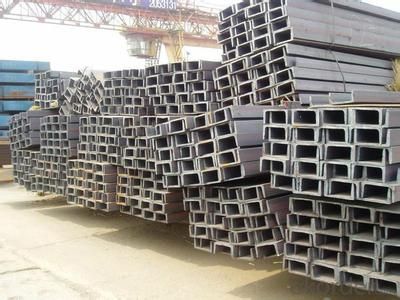
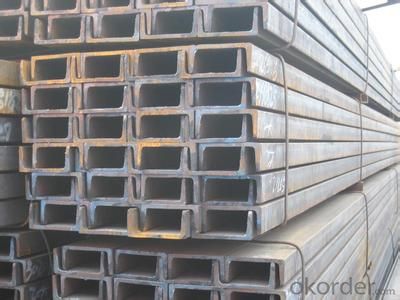
- Q:How do you use a steel square to check for plumbness?
- To use a steel square to check for plumbness, you simply align one edge of the square against the surface you want to check. Then, observe if the vertical edge of the square aligns perfectly with the surface. If it does, the surface is plumb; if not, adjustments need to be made to ensure it is perfectly vertical.
- Q:Can a steel square be used for retaining wall construction?
- Yes, a steel square can be used for retaining wall construction. A steel square, also known as a framing square or carpenter's square, is a versatile tool that can be used for a variety of tasks in construction, including layout and measurement. When constructing a retaining wall, a steel square can be used to ensure accurate and square corners, as well as to measure and mark the location of the wall's foundation and footings. It can also be used to check for level and plumb during the construction process. While there are other specialized tools available for retaining wall construction, a steel square can certainly be a useful and practical tool to have on hand.
- Q:Can a steel square be used for shelving installation?
- Yes, a steel square can be used for shelving installation. Steel squares are commonly used in construction and carpentry for measuring and marking right angles, which is essential for accurately installing shelving units.
- Q:Can a steel square be used for roofing work?
- Yes, a steel square can be used for roofing work. It is a versatile tool that can be used for measuring and marking angles, determining pitch, and making accurate cuts. Its sturdy construction and durability make it suitable for various roofing tasks.
- Q:How do you use a steel square for creating accurate corner lap joints?
- To create accurate corner lap joints using a steel square, first, align one edge of the square with the end of the board and mark the desired length on the board. Then, slide the square along the board's length, ensuring the square's edge remains aligned with the end. Continue marking the desired length until you reach the corner. Next, align the square's shorter arm with the previously marked line and draw a perpendicular line across the board. Repeat this process on the adjoining board. Finally, cut along the marked lines to create precise corner lap joints. The steel square helps maintain the accuracy and squareness of the joints throughout the process.
- Q:How do you use a steel square to measure and mark 50.625-degree angles?
- To use a steel square to measure and mark a 50.625-degree angle, follow these steps: 1. Start by confirming that your steel square has a protractor scale on one of its sides. This protractor scale is usually marked in degrees. 2. Place the steel square on a flat surface, ensuring that it is stable and not wobbling. 3. Locate the zero-degree mark on the protractor scale. This mark is typically positioned at one of the corners of the steel square. 4. Align the edge of the steel square with the line or surface on which you want to measure and mark the angle. 5. Look for the angle measurement that is closest to 50.625 degrees on the protractor scale. Since steel squares usually have graduations in whole degrees, you may need to estimate and approximate the desired angle. 6. Once you have identified the closest angle measurement, make a small mark on the line or surface at the corresponding point on the protractor scale. 7. Using a straightedge or ruler, draw a line from the mark you made to the desired endpoint of the angle. 8. This line represents the 50.625-degree angle you want to measure and mark. It's important to note that steel squares are not typically designed for measuring and marking precise angles with decimal places. They are more commonly used for right angles (90 degrees) or other common angles like 45 degrees or 30 degrees. If you require a highly accurate measurement of a 50.625-degree angle, you may need to use a different measuring tool, such as a protractor or a digital angle gauge.
- Q:How do you use a steel square to determine the height of an object?
- To determine the height of an object using a steel square, follow these steps: 1. Ensure the steel square is level and stable by placing it on a flat surface. 2. Position the object you want to measure next to the steel square. 3. Vertically align the long side of the steel square with the side of the object, ensuring it is flush against the object's surface. 4. Observe the measurement markings on the steel square. The point where the top edge of the object intersects with the measurement scale on the square indicates the object's height. 5. Take note of the measurement indicated on the steel square, as it represents the object's height. Please note that if the object has an irregular shape or is not flat, you may need to adjust your positioning to find a consistent reference point for measurement. Additionally, accuracy in calibration and readability of the steel square's measurements are crucial for obtaining precise results.
- Q:How do you use a steel square to measure board diagonals at different angles?
- To use a steel square to measure board diagonals at different angles, you would first position the steel square against one corner of the board. Then, align the long side of the square with one edge of the board, ensuring it is firmly in place. Next, extend the short side of the square to the opposite corner of the board, measuring the diagonal distance. To measure the diagonal at a different angle, simply rotate the square accordingly and repeat the process.
- Q:How do you use a steel square to find angles for bevel cuts?
- To use a steel square to find angles for bevel cuts, you can follow these steps: 1. Start by understanding the steel square's markings: The steel square typically has two arms, one longer than the other, forming a right angle. The longer arm is called the blade, while the shorter one is known as the tongue. Both arms have markings and measurements along their edges. 2. Determine the angle you want to achieve: Before using the steel square, you need to know the specific angle you want to cut. For example, if you need a 45-degree bevel cut, you will be looking for that specific angle on the steel square. 3. Align the steel square with the edge of the material: Place the blade of the steel square against the edge of the material you want to cut. Ensure it is flushed against the surface and that the tongue extends outwards. 4. Locate the desired angle on the steel square: Look for the angle measurement you want to achieve along the tongue or blade of the steel square. The angles are typically marked in degrees. 5. Position the material accordingly: Once you have located the correct angle on the steel square, adjust the material accordingly. Align the edge of the material with the corresponding angle mark on the steel square. This will ensure that the bevel cut is made at the desired angle. 6. Secure the material: After positioning the material, make sure it is securely fastened or clamped in place. This will prevent any movement during the cutting process, ensuring accuracy and safety. 7. Make the bevel cut: Finally, using a suitable saw or cutting tool, carefully cut along the marked line to achieve the desired bevel angle. Remember, practice caution and take necessary safety precautions when working with tools and machinery to prevent accidents or injuries.
- Q:What are some common uses of a steel square in metalworking sculpture?
- A steel square, also known as a framing square or a carpenter's square, is a versatile tool that is commonly used in metalworking sculpture for various purposes. Some of the common uses of a steel square in metalworking sculpture include: 1. Layout and marking: A steel square is an essential tool for marking and laying out precise measurements on metal sheets or other materials. It helps in creating straight lines, right angles, and accurate measurements, ensuring the proper alignment and symmetry of the sculpture. 2. Checking for squareness: Metalworking sculptures often require precise angles and right-angled corners. A steel square allows sculptors to check for squareness and ensure that all corners and edges are perfectly aligned, preventing any distortions or irregularities in the final piece. 3. Measuring and transferring dimensions: Metalworking sculptures require precise measurements for cutting, shaping, and joining various components. A steel square enables sculptors to measure and transfer dimensions accurately, ensuring the correct sizing and fit of different parts of the sculpture. 4. Creating miter cuts: Miter cuts, which are angled cuts made on the ends of metal pieces to create clean, tight joints, are a common technique in metalworking sculpture. A steel square aids in marking and cutting precise angles, allowing sculptors to achieve seamless connections between different metal elements. 5. Checking for flatness: A steel square can be used to check the flatness of metal surfaces, ensuring that they are level and even. This is particularly important when working with large metal sheets or when joining different components, as any unevenness can affect the overall stability and appearance of the sculpture. 6. Creating parallel lines: Parallel lines are often required in metalworking sculpture to achieve symmetry or to guide the placement of various elements. A steel square allows sculptors to easily create parallel lines, ensuring uniformity and balance in the design. Overall, a steel square is an indispensable tool in metalworking sculpture, helping artists and craftsmen achieve precision, accuracy, and consistency in their work.
1. Manufacturer Overview |
|
|---|---|
| Location | |
| Year Established | |
| Annual Output Value | |
| Main Markets | |
| Company Certifications | |
2. Manufacturer Certificates |
|
|---|---|
| a) Certification Name | |
| Range | |
| Reference | |
| Validity Period | |
3. Manufacturer Capability |
|
|---|---|
| a)Trade Capacity | |
| Nearest Port | |
| Export Percentage | |
| No.of Employees in Trade Department | |
| Language Spoken: | |
| b)Factory Information | |
| Factory Size: | |
| No. of Production Lines | |
| Contract Manufacturing | |
| Product Price Range | |
Send your message to us
140mm*60mm u channel steel for construction
- Loading Port:
- Tianjin
- Payment Terms:
- TT or LC
- Min Order Qty:
- 25 m.t.
- Supply Capability:
- 100000 m.t./month
OKorder Service Pledge
OKorder Financial Service
Similar products
New products
Hot products
Related keywords
